Maintenance Is The Key To a Trouble-free Tenting Season
Very few people know more about what goes into a Tent OX System than Lewis Nolt of Nolt’s Power Equipment, located in Shippensburg, PA.
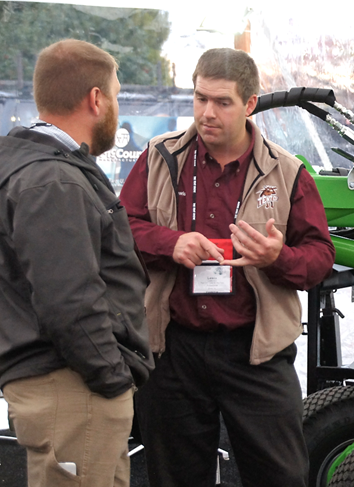
Lewis has partnered closely with Tent OX with founder and CEO Scott Woodruff in the design and build process for Tent OX’s range of attachments, which are manufactured not far from the Nolt’s dealership. When Lewis looks at any part of a Tent OX System, whether it’s an OX Stake Driver, Fork, Roof Panel puller or any other attachment, he sees through to every weld and change he helped engineer to achieve high performance and reliability out on the tent site.
We asked Lewis to share his unique perspective on keeping Tent OX attachments in tip-top shape. You’ll also benefit from his tips on maintaining the Avant loader. Lewis’s experience with Avant machines (he’s also North America’s top Avant dealer salesperson) makes him highly qualified to offer this advice.
Winter is a good time to tune up attachments
“We notice that a lot of Tent OX attachments that sit out in the weather come back to us with a lot of rust, ,” Lewis says. “Your tent customers notice a clean, professional appearance in your equipment, so why not fix them up in the offseason? A simple repaint with a rust inhibitor can make the tool look new. Just cover the decals with tape before you paint.”

Hydraulic attachments should definitely have a pair of eyes laid on them in the off season, Lewis adds. “I would start by examining attachment connector blocks. They tent to get dropped and the alignment pins can be broken when they’re dragged around. Replace as needed and keep a spare on the shelf for the season to eliminate the potential for downtime. Keep in mind that connectors are different for Stake Driver and Stake Puller attachments, so keep a spare for each on the shelf.”
When a hydraulic attachment is not mounted on the loader, place its connector block in the parking stand located on the attachment itself, as shown here.
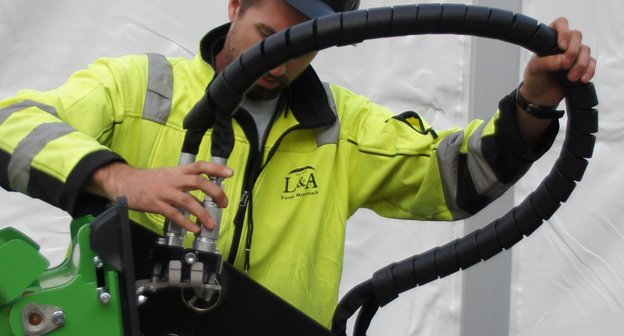
Check hoses and fittings. Use the Winter break to check for wear or abrasion. “It’s easy to take the hoses off and drive down to a hydraulics shop for replacements. While you’re there you may as well get a spare set to put on the shelf”.
Stake driver tips. The stake driver has a stainless-steel protective cover over the hydraulic hoses. If that cover is missing or broken, replace it, Lewis suggests. And speaking of tips, keep a spare driver bit on hand.
Roof Panel Puller. Look at the black rope guard…
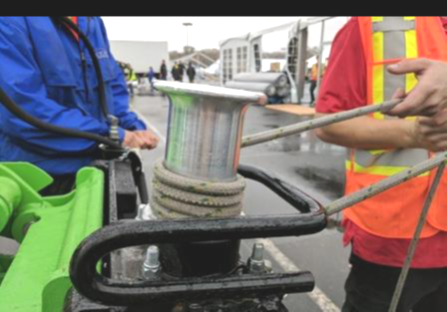
…on the Roof Panel Puller and replace it if bent.
Roof Panel Puller hydraulics are exposed and can be damaged through mishandling.
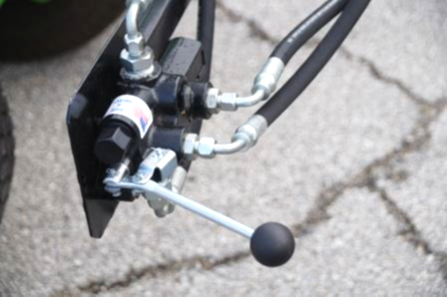
Check them frequently. If the hydraulic handle shown here is broken or damaged, replace it, and you’ll find the new part has been upgraded to a heavy-duty, stainless-steel handle.
Make your Avant loader or loaders part of your fleet maintenance strategy
When you buy a truck, you establish a maintenance regime for it. Do the same with your Avant loader. Take advantage of Winter to check it over carefully, before things get busy.
Start at the interface plate. Check all the pins that hold the interface plate and the cylinders on the boom itself. Be aware that the retaining bolt is not designed to rotate, but if it rusts, it can snap off, causing a failure.
Remove all panels from the machine and pressure wash the debris out. Follow up with a good visual inspection. The oil cooler can often be full of dust, for instance. Any issues, including leaks that might be masked by a buildup, become easier to find. “Basically, house-clean the machine from one end to the other,” Lewis explains. “When you put panels back on, you may come up short on panel screws and bolts that may have vibrated out. Take samples from the machine to your hardware store and buy both replacements and spares. Fully secured panels are less likely to break. Broken or cracked panels? Replace them and create a professional image for your equipment,” he adds.
Checking fluids, air filters, oil change intervals. That’s all covered in the service information you receive with the machine. Another very important off-season task that Lewis says you can’t ignore is to remove the fuel tank and drain sediment out of the bottom. Avant configures the tank for easy removal so this task can be completed quickly. Don’t put it off.
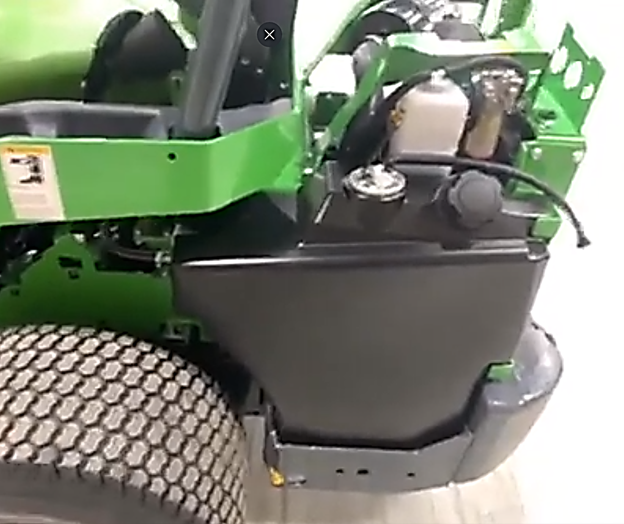
Check tires to see if they will last the upcoming season. Generally, tires last about 1000 hours. Rear tires wear faster because they carry more weight. And if the tires are good, rotate them for more even wear. Keep a spare tire in the shop. Someday you’ll be glad you did!
Replace bent weight bolts – Are your rear weights sagging? What you see below is not an appropriate configuration, nor does it look good!
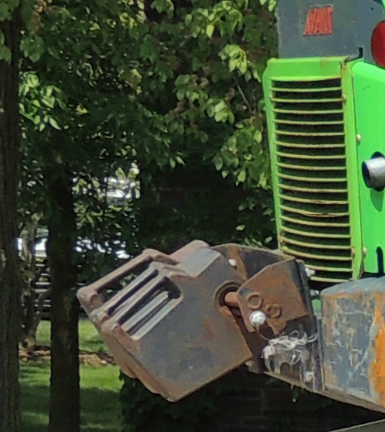
Replace any of the 12 mm bolts that have been bent at your local hardware store and get back to this:
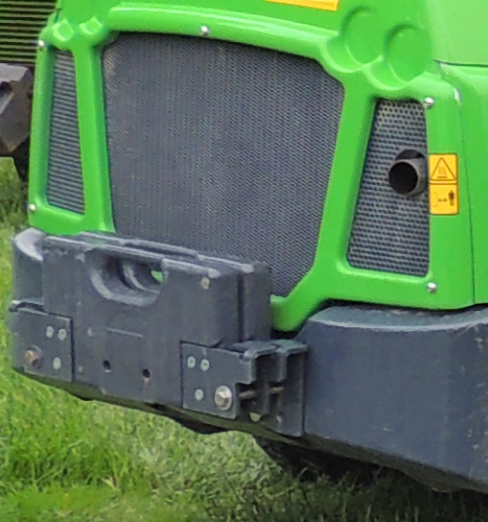
Seat cushions. Everybody hates a wet rear end when the seat is torn. Put a new seat in it.
Looking for more information on Avant maintenance?
Take a look at a two-hour video shot in May, 2020,

where Avant’s own US service manager points out key maintenance tasks and takes you for a tour of one of its loaders to show specific grease points. A summary of the video presentation can be found here.
